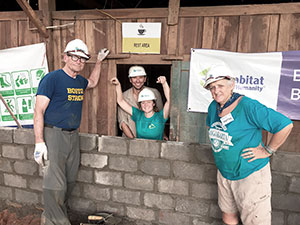
This unorthodox family photo has Ed on the left, Martha on the right, and Augusta and her fiancé, Carsten Stuhr, in the window.
By William C Shelton
In November, ‘villens Martha Friend and Ed Smith joined a Habitat for Humanity team in Yogyakarta on the Indonesian island of Java. In the process of building two homes, they discovered that they were simultaneously building relationships of trust, goodwill and cooperation that form a habitat for “humanity’s” second meaning – mutual kindness and compassion.
Habitat for Humanity was founded in 1976 to “put God’s love into action,” by “bringing people together to build homes, communities, and hope.” Although its founders were guided by their Christian faith, they forbid proselytizing and worked closely with people of all faiths, or none. Rosalyn and Jimmy Carter have been early and continual patrons and participants.
The organization operates in 1,400 U.S. communities and 70 countries, where volunteers have built or rehabilitated over 800,000 homes. It selects homeowners based on “their level of need, willingness to become partners in the program, and ability to repay the loan.” They are expected to contribute at least 500 hours of their own labor, and to pay off an affordable, no-interest mortgage.
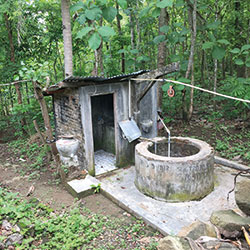 About the time of Habitat’s founding, Martha Friend settled in Somerville, having graduated from UMass Boston. Since then she has worked as a teacher and artist.
About the time of Habitat’s founding, Martha Friend settled in Somerville, having graduated from UMass Boston. Since then she has worked as a teacher and artist.
Martha is what drew Ed Smith to Somerville. He had begun law school at Boston University in 1976, and his sister and Martha were friends. After graduation, Ed suggested that he and Martha move to his hometown in Western New York, where he had extensive contacts who could be helpful in establishing a successful law practice.
But Martha wanted to remain where she had lived for 35 years. She persuaded Ed that he would be able to set up shop in the Greater Boston area. She was right. Ed still practices law in Davis Square, and over the ensuing years, they have raised three children.
One of those is Augusta. Now age 32, she lives in Jackson Hole, Wyoming, where she is active in the local Habitat chapter. It is composed largely of working people who are acquainted with physical labor and living outdoors.
In April 2016, Martha and Ed joined Augusta’s team, which was building an athletic field on the side of a mountain, at the edge of Bogota. It was in a shanty town created by refugees from Columbia’s guerilla war. The work was physically demanding, exploiting such low-tech expedients as bucket brigades and wheel barrows.
Martha was pleased to discover that she was both expected to work hard, and capable of doing so. She and Ed were also pleased with the product – a safe place for kids to play and for the community to gather. Now Habitat is building a sewage management system there.
Two months ago, Ed and Martha joined the same team in the world’s most populous Muslim nation. Their mission was to lay the foundation and build the walls of homes for two families.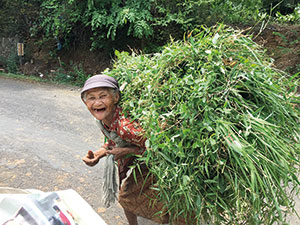
Wrestling cinder blocks in 90-degree heat with 90 percent humidity produced sweat so intense that the men could wring water out of their clothing and had to continually rehydrate. The daily rainstorm came as a welcome relief rather than as a nuisance.
Since the Muslim culture prohibited women from doing construction work, Martha shared tasks with a local woman who, with her adult daughter, would own one of the homes. Although they had no words in common, they wordlessly communed through gesture, intuition, and a growing mutual understanding.
At the end of each workday, the community gathered and fed the workers. Team members took turns telling each other the best, worst, and weirdest thing that had happened to them each day. They were all impressed with how relaxed, open, loving, and generally happy the local people were, despite their humble material existence.
On weekends they explored the countryside in Jeeps driven by daredevil local drivers. They not only visited such tourist sites as a thousand-year-old temple, but also such microenterprises as a woman who made crackers out of peanuts, and a tofu factory. Wherever they went, they encountered Indonesians who, devoid of apprehension or suspicion, welcomed them and wanted to be photographed with them.
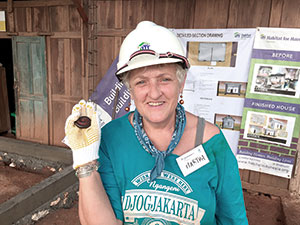 As the work and the interaction progressed, they came to understand that the habitat they were building wasn’t just physical. It was a shared space in which people – both Americans and Indonesians – could experience each other’s humanity.
As the work and the interaction progressed, they came to understand that the habitat they were building wasn’t just physical. It was a shared space in which people – both Americans and Indonesians – could experience each other’s humanity.
At the conclusion of the team’s work, they had a dedication ceremony. One-by-one, the matriarch with who Martha had shared her time thanked and said farewell to each team member. When she reached Martha, she wept.
Ed and Martha tell me that, on one level, there isn’t much extraordinary about the construction experience itself. Any healthy person who is willing can do the work.
But it is enormously satisfying. And it is a means of spreading goodwill in places where the United States does not always have the best reputation. So they will be doing it again.
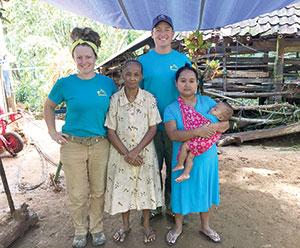
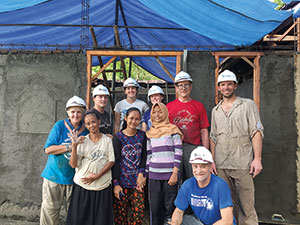
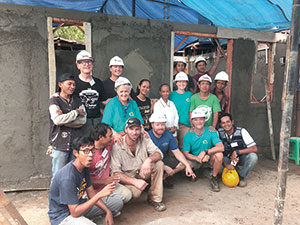












Reader Comments